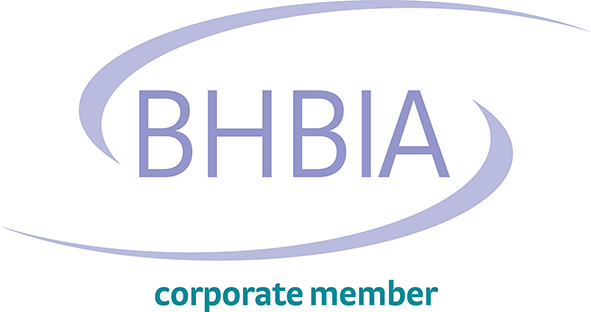Market Research Glossary
Market Research Glossary
There are currently 85 names in this directory beginning with the letter T.
T Distribution
is a symmetrical bell-shaped distribution that is used for testing samples smaller than 30.
T Test
is a statistical test that compares a sample mean with a hypothesised mean for a population of interest. The test is appropriate for small sample sizes (less than 30) or when the population variance is unknown. The test is also designed for comparing the differences between two means.
T-Distribution
The T distribution, also known as the Student's t-distribution, is a type of probability distribution that is similar to the normal distribution with its bell shape but has heavier tails.
T-Scope
A device to show ads, packages, etc., for brief intervals of time (1/10 of a second, 1/100 of a second, etc.). ... Similar to the term Target Audience, but includes all marketing activities (not just media advertising).
T-Test
A t-test is a type of inferential statistic used to determine if there is a significant difference between the means of two groups, which may be related in certain features.
Tab
Tabulating or calculating collected survey responses. The tabulations or calculations are can completed by computer or manually.
Tab (aka Tabulate)
is the process of counting the various responses to each question asked in a survey.
Tab Plan
A plan that details the column and row headings in the cross-tabulations that are produced from the data.
Tachistoscope
is a device that allows a participant to look at some stimulus material (eg packaging or a brand name) for a predefined brief period of time. The aim is to investigate the stand out and/or recognisability of the material under investigation.
Tally
can tell you a wealth of information that you may not get if you access each participant individually and in person.
Tally Sheet
is a form used by each interviewer on a job to track the results of each contact made for a study, whether by phone or in person. This form can also be referred to as a "call record sheet", "contract record", "dialling records" or a "tick sheet". A new tally should be used every day of a job by each interviewer.
Target Audience
A target audience is defined as a group of people having common interests, demographics, and behavior. Market researchers need to collect feedback from the consumers of certain products and services.
Target Population
The target population for a survey is the entire set of units for which the survey data are to be used to make inferences.
Taste Test
is where participants evaluate the taste of a product, either on its own or compared with other products. Taste tests are often conducted "blind" where brand names, packaging and other identifying items are removed. Taste tests are usually conducted at a central location, although they can be carried out in participants' homes.
Teleology
is a consequential approach to evaluating ethics whereby the degree of ethicalness depends on the outcomes or actions that result from the decisions (rather than the decisions themselves).
Telephone Areas
Areas defined by codes in telephone numbers (the first six digits of a phone number).
Telephone Focus Groups
A focus group conducted through a telephone conference call. Usually 7-10 individuals are involved including a moderator that leads the discussion about a predetermined topic.
Telephone Interview
is where participants are asked survey questions over the telephone. Telephone interviewing is usually conducted from a central telephone interviewing facility.
Telephone Survey
A telephone survey is one of the survey methods used in collecting data either from the general population or from a specific target population.
Telescoping
is when respondents misremember when an event occurred, usually by stating that it occurred more recently than it really did.
Television Market
is a region where the population can receive the same (or similar) television and radio station offerings, and may also include other types of media including newspapers and Internet content.
Television Rating
One TVR represents 1% of a specified television audience or universe seeing an advert at least once. (At extremes, television ratings can be made from either many people seeing an advert only once, or just a few people seeing an advert many times.)
Temporal Ordering
is when a variable X (or a change in X) must occur before the variable Y (or a change in Y) is observed and it is one of the three conditions that have to be met to infer a causal relationship.
Temporal Sequence
There must be an appropriate time order of the events. The "cause" must happen before the "effect." Sometimes there may be a strong correlation between two variables, but we cannot say with any certainty that one is the dependent variable and the other is the independent variable.
Temporary Population
An area where residents may be seasonal. Examples include commuters, tourists, snowbirds, etc.
Terminate
is when an interview is stopped before completion. This may occur for one of three reasons: (1) The respondent gives a non-qualifying response and the interviewer is instructed to TERMINATE AND TALLY. (2) The interviewer decides to stop the interview because of a language problem or disability on the part of the respondent. (3) The respondent refuses to complete the entire survey
Termination Rate
is the number of eligible respondents who do not complete an interview once started.
Test Market
to check the viability of their new product or a marketing campaign before it is being launched in the market on a large scale.
Test Marketing
is a type of controlled experiment conducted in a carefully selected geographical area to understand the impact of a marketing programme on the sales or profits of a product or service.
Test Statistic
is a measure (derived from a formula) of how close the sample has come to the null hypothesis.
Test-Retest Reliability
is a method of estimating the reliability of a test by repeating the measurement using the same scaling device under conditions that are judged to be similar.
Tests of Significance
A mathematical test to determine if the findings in an experiment were due to influences of one or multiple variables on a dependent variable or merely by chance.
Theatre Test
is an advertising testing procedure where participants are exposed to test and control commercials in the context of a TV programme or a film.
Thematic Apperception Test (TAT)
is a projective technique where participants are presented with one or more pictures or cartoons that depict a situation. They are asked to suggest what will happen or what one character may be saying or thinking in response to another character or a situation.
Thematic Maps
A thematic map shows the spatial distribution of one or more specific data themes for selected geographic areas.
Theory-Construction Diary
Theory-Construction Diary: A journal that documents in detail the thoughts, premises, hypotheses, and revisions in the thinking of a humanistic researcher.
Third Person Technique
is a projective technique where participants are presented with a situation and are asked to suggest the feelings and attitudes of other people to the situation.
Third-Person Techniques
The third-person technique, more than any other projective technique, is used to elicit deep seated feelings and opinions held by respondents, that might be perceived as reflecting negatively upon the individual.
Tick Mark
A tick is a measure of the minimum upward or downward movement in the price of a security. A tick can also refer to the change in the price of a security from one trade to the next trade.
Time Series Analysis
Time series analysis is a statistical technique to analyze the pattern of data points taken over time to forecast the future. The major components or pattern that are analyzed through time series are: Trend. Increase or decrease in the series of data over longer a period.
Time Series Design
is a type of quasi-experimental design where a series of periodic measurements is taken from one group of test units, followed by a treatment, then another series of measurements.
Time Use Survey
A time-use survey is a statistical survey which aims to report data on how, on average, people spend their time.
Top Box Score
is the percentage of respondents who gave the highest or top score on a scale. Sometimes the top two or three scores may be aggregated to calculate a top boxes score.
Top-of-Mind Awareness
refers to a brand or specific product being first in customers' minds when thinking of a particular industry or category.
Topic Guide
this is an outline of key issues and areas of questioning used to guide a qualitative interview or group discussion.
Topline
The top line is a reference to gross figures reported by a company, such as sales or revenue. A company that increases its revenue or sales is said to be generating top-line growth.
Total Error
is the difference between the true value of a parameter in the population and a value derived from a survey. Total error is the sum of the sampling and non-sampling errors in a survey.
Total Unaided Recall
is a marketing technique to determine how well a consumer remembers an advertisement without any external help such as clues, or visuals.
Touch Tone Aided Telephone Interviewing (TATI)
Interviewer-administered telephone surveying in which the respondent uses the touch-tone buttons of his or her phone to provide answers.
Touch-Tone Data Entry (TDE)
is a method used with telephone surveys to enable the respondent to directly enter information using the keypad on his or her phone rather than speaking the information to an interviewer.
Trace Analysis
In trace analysis, data collection is based on physical traces, or evidence, of past behaviour. The respondents may leave these traces intentionally or unintentionally.
Tracking
Tracking is the generic term for studies that provide measurement over time to update knowledge of brand and competitor performances.
Tracking Study
is a study that provides periodic updating of company and competitor performances on criteria other than sales.
Trade Area
The geographical area that represents where a business’s customers are coming from. The size can vary greatly from a part of a city to an entire nation.
Trade Off Analysis
is a family of methods by which respondents' utilities for various product features (usually including price) are measured. ... In these cases, respondents are asked to consider alternatives and state a likelihood of purchase or preference for each alternative.
Traffic Count
is the measurement of a flow of people or vehicles past a particular point and it can be used in observation studies.
Traffic Counters
A traffic count is a count of vehicular or pedestrian traffic, which is conducted along a particular road, path, or intersection.
Transcribing
is audio data collected and converted into word format. It also allows for the precise organization of data that gives researchers pinpoint accuracy.
Transcript
is audio data collected and converted into word format. Many different types of Market Research Transcriptions are available, some of which may not seem remarkable.
Trend Data
Survey responses demonstarting the change of views and perceptions about a particular topic over time.
Triad
Triads involve three participants who may or may not know one another. Triads also offer researchers opportunities to test how group dynamics can influence purchasing behaviors.
Trial Rate
The percentage of a target market (i.e., all adults who consume popcorn) who buy a product at least once.
Triangular Product Test
is a type of blind test that involves three products where two are similar and the third is different. Participants are asked to test all three and indicate which two are similar to each other. The purpose of the test is to determine the degree to which participants can differentiate between the similar products and the different one.
Trimmed Mean
A trimmed mean removes a small designated percentage of the largest and smallest values before calculating the average.
True Experimental Design
is a type of experimental design where the researcher randomly assigns test units and treatments to the experimental groups. Examples of true experimental designs are: pre-test - post-test control group, post-test only control group and a Solomon four group, six-study design.
TTRA
Travel and Tourism Research Association (ttra) is a non-profit association whose purpose is to enhance the quality, value, effectiveness and use of research in travel marketing, planning, and development.
TVR
TVRs or TV rating points are a way of sizing target audiences across both demographics and geography.
Tween
A tween is vaguely defined as a prepubescent between the ages of 8 to 14, 9 to 12, or 8 to 12, depending on whom you believe.
Tweenager
A young person aged around 8/9 to 12, who does not consider themselves to be a child, but is not yet a teenager.
Two Stage Sampling
is a simple case of multi-stage sampling where a sample of units is drawn from selected sub-groups of a population of interest. (Whereas with one stage sampling, data is collected from all available units in the selected sub-groups.)
Two-Tailed Test
is a test where the null hypothesis is expressed in terms of a characteristic existing or not existing, eg a value is 50%. From the results of the test, it is not possible to. determine on which side of the test value the true answer lies, therefore directional (or one-tailed tests) are used more often.
Two-Way Focus Groups
Focus groups are often conducted behind one-way glass, where researchers can take note of what's going on. In these types of groups, the whole group watches another and comments on what they observe and hear. Dual moderator focus group.



